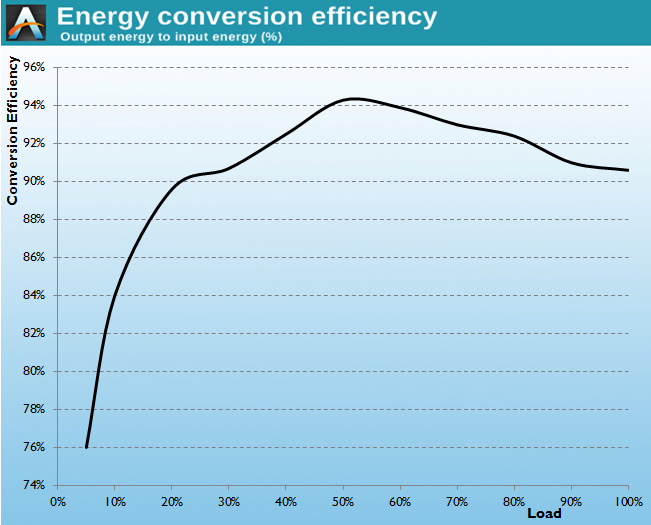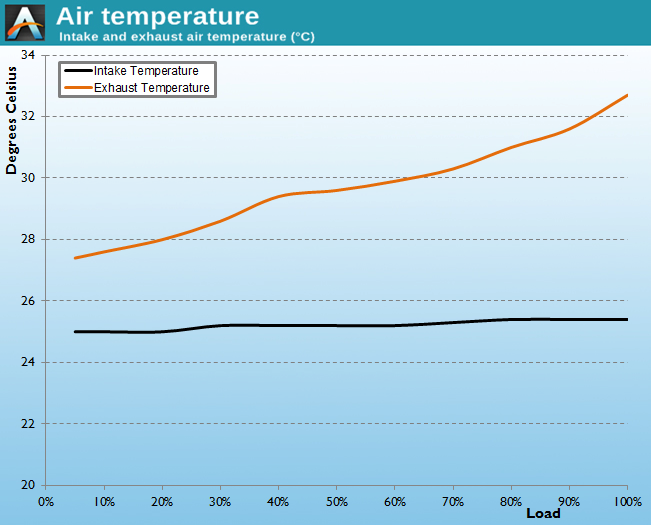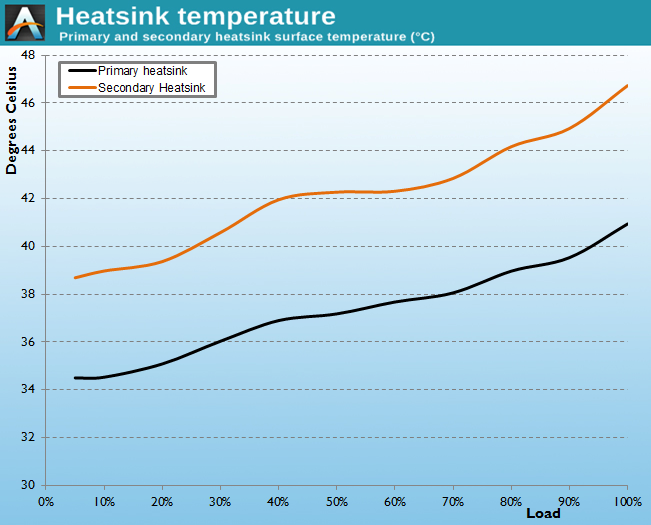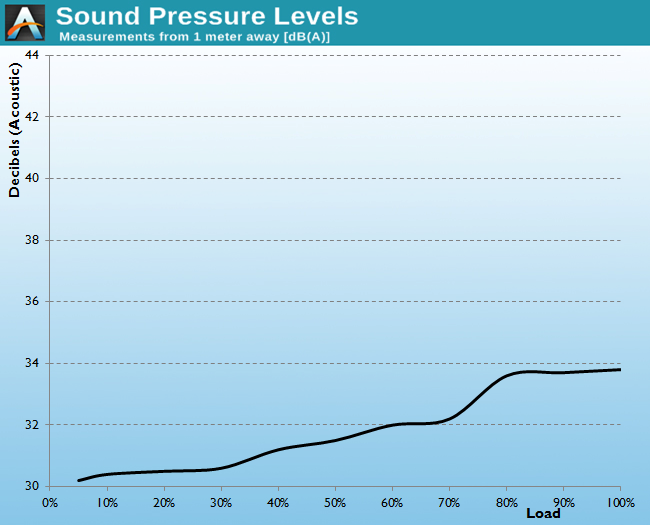Seasonic S12G 650W Power Supply Review
by E. Fylladitakis on February 28, 2014 2:20 PM EST- Posted in
- Cases/Cooling/PSUs
- Seasonic
- 80 Plus Gold
Test Equipment and Methodology
For the testing of PSUs, we are using high precision electronic loads with a maximum power draw of 2700W, a Rigol DS5042M 40MHz oscilloscope, an Extech 380803 power analyzer, two high precision UNI-T UT-325 digital thermometers, an Extech HD600 SPL meter, a self-designed hotbox, and various other bits and parts. For a thorough explanation of our testing methodology and more details on our equipment, please refer to our How We Test PSUs - 2014 Pipeline post.
Cold Test Results
At room temperature, the Seasonic S12G 650W unit easily honors its 80 Plus Gold certification, reaching up to 94.4% efficiency at 50% load. Inside the normal operating range of the power supply, which is between 20% and 100% load, the efficiency remains above 90% at all times. In fact, if the S12G was just a little more efficient while heavily stressed, it could hit 80 Plus Platinum status.
As expected, the efficiency drops sharply when the load is below 20% (130W in this case), dropping down to 76% with a 32W load, but it goes up to 84% when the load is increased to 65W. These are considered "out of range" conditions and do not affect the 80 Plus certification of the unit, but considering many modern PCs will idle at 40-60W, it's still worthwhile to look at performance at these loads. Of course, at 32W load the difference between 75% and 85% efficiency only amounts to around 5W at the outlet.
Both the air and the heatsink temperatures might appear a little high for a unit of this capacity and efficiency operating at room temperature, but that is because the fan of the Seasonic S12G 650W PSU is being "lazy" -- or "quiet" if you prefer. The fan is thermally controlled and it looks like Seasonic decided it didn't need to spin faster under such testing conditions. During our SPL testing, the fan reaches audible levels only after the unit hits ~80% of its rated output.














77 Comments
View All Comments
WoodyPWX - Friday, February 28, 2014 - link
Ordered, thanks!mark28 - Friday, February 28, 2014 - link
How's their fanless PSUs now? The last few I got had a really annoying constant buzzing sound.Sivar - Friday, February 28, 2014 - link
I returned two of them before I ordered a Rosewill SilentNight (same as Kingwin Stryker STR-500). I heard the new generations of Seasonic are almost always silent, but I'm happy with the SilentNight, too.stratum - Saturday, March 1, 2014 - link
I got a fanless Seasonic PSU last month and the constant buzz was more annoying than a PSU with a fan. Waste of money when my main reason for getting it was negated.motas - Saturday, March 1, 2014 - link
For my builds that rarely draw 250 W max, after how reliable the PSU is, the next thing I care most about is the noise. Not just dBA numbers but also how it sounds. You could look at the frequency spectrum and most of the sounds people would find more annoying would show a pattern. A fan putting out 30 dBA could sound "worse" than one at 35 dBA. Last I care about is efficiency. As long as the PSU can reliably provide the requested power then I'm good. I'm not runing servers or crypto miners at constant load 24/7.E.Fyll - Saturday, March 1, 2014 - link
"A" in "dB(A)" stands for "acoustic", i.e. it is within the part of the dB range that your ears can perceive. You are actually right that a fan rated at 30 dB(A) can actually sound worse than a fan rated at 35 dB(A), but that's because these readings/ratings are being taken inside anechoic chambers. It is possible that due to vibrations or simply because of the frequency the sound is emitted at (reflections, echo, etc), the first fan could actually sound worse than the second fan inside a real room; but the instruments would read that as well. We are doing noise testing inside a real room so that is as close to reality as it gets.I understand that some "types" of noise might be more bothersome than others to some people, but that is relative and mostly psychological; I cannot possibly assess that quantifiably.
morso - Saturday, March 1, 2014 - link
How about provide a frequency spectrum plot. You know, white noise vs colored noise. People can then decide for themselves if the sound is good or not.g.davis - Saturday, March 1, 2014 - link
If that's not possible then maybe record the sound and post an audio file. Hopefully, the recording process can be standardized. That buzzing sound from a fanless Seasonic PSU was extremely annoying especially for a bedroom PC that doesn't get turned off. I'd rather get a louder PSU with a fan. Which I did.E.Fyll - Saturday, March 1, 2014 - link
You actually suggested inserting a graph with spectral profiles in a review?People cannot decide "if the sound is good or not" by looking at such a graph, not only because it will not tell you anything of actual relevance but because, well, they cannot read it. Aside the fact that only a handful people can actually read such a graph, do you realize the kind of equipment that is required to generate it? Space aside, we are talking about hundreds of thousands of dollars.
This is absolutely out of the question, sorry.
tosisgray - Saturday, March 1, 2014 - link
Why not provide an audio recording. Sometimes it's the subjective parts people care about most. With your statement, it seems you're not targeting professiosnals anyway. Efficiency doesn't matter much to the crowd you seem to be targeting unless the vendor is falsely advertising their product. These PSUs will likely go inside homes. Maybe bedrooms and living rooms.